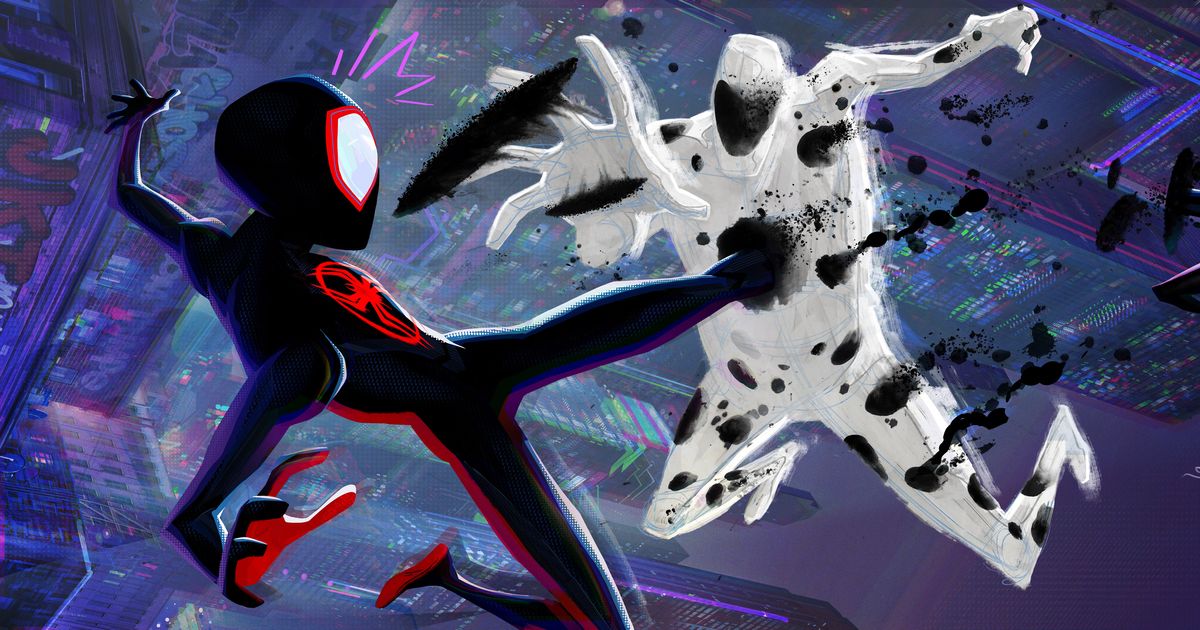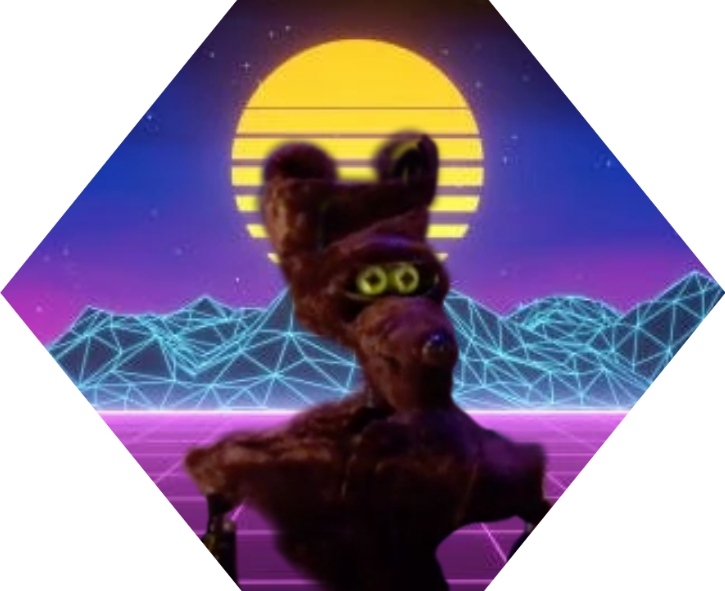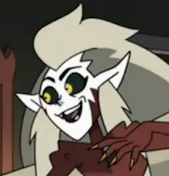Over the past decade, Phil Lord and Chris Miller — and in Hollywood, they are always referred to as Lord and Miller; never Miller and Lord — have distinguished themselves as the critically acclaimed writer-director-producers behind animated crowd-pleasers like their breakthrough Cloudy With a Chance of Meatballs and the billion-dollar Lego Movie franchise. (The duo have succeeded in live-action fare too — see 21 and 22 Jump Street — though they were fired mid-movie from the stand-alone Star Wars prequel Solo.) But it’s their work on the Oscar-winning Spider-Man: Into the Spider-Verse that set a new bar for the animation industry, borrowing from vintage comic-books, psychedelia, and street art to create a novel visual language for not just superhero films but computer-animated work generally. While Pixar and Disney Animation suffer in box-office slumps — losing out to Dreamworks’ surprise hit Puss in Boots: The Last Wish and Illumination Entertainment’s top-grossing The Super Mario Bros. Movie — Sony Pictures Animation has cut through the cultural clutter with Lord and Miller’s revolutionary style. One that seems to have inspired Paramount’s Teenage Mutant Ninja Turtles reboot, causing fans and critics to wonder, Why don’t more animated movies look this good?
According to people who worked on the sequel, Across the Spider-Verse, it’s because the working conditions required to produce such artistry are not sustainable. Multiple Across the Spider-Verse crew members — ranging from artists to production executives who have worked anywhere from five to a dozen years in the animation business — describe the process of making the the $150 million Sony project as uniquely arduous, involving a relentless kind of revisionism that compelled approximately 100 artists to flee the movie before its completion. Four of these crew members agreed to speak pseudonymously about the sprint to finish the movie three years into the sequel’s development and production, a period whose franticness they attribute to Lord’s management style — in particular, his seeming inability to conceptualize 3-D animation during the early planning stages and his preference to edit fully rendered work instead.
While frequent major overhauls are standard operating procedure in animation (Pixar films can take between four and seven years to plot, animate, and render), those changes typically occur early on during development and storyboarding stages. But these Spider-Verse 2 crew members say they were asked to make alterations to already-approved animated sequences that created a backlog of work across multiple late-stage departments. Across the Spider-Verse was meant to debut in theaters in April of 2022, before it was postponed to October of that year and then June 2023 owing to what Entertainment Weekly reported as “pandemic-related delays.” However, the four crew members say animators who were hired in the spring of 2021 sat idle for anywhere from three to six months that year while Lord tinkered with the movie in the layout stage, when the first 3-D representation of storyboards are created.
As a result, these individuals say, they were pushed to work more than 11 hours a day, seven days a week, for more than a year to make up for time lost and were forced back to the drawing board as many as five times to revise work during the final rendering stage. In these insiders’ telling, Across the Spider-Verse’s triumvirate of directors, Joaquim Dos Santos, Justin K. Thompson, and Kemp Powers, were overshadowed by the forceful presence of Lord, who sought final approval for every sequence in the film. Miller, for his part, was said to be MIA for much of the production. (Through the studio, Lord, Miller, Dos Santos, Thompson, and Powers declined to comment for this story.)
Sony executives dispute these claims about Lord’s management style, including his alleged insistence on approving every sequence in the film, describing feature animation as a generally “iterative process.” According to Amy Pascal, the former Sony Pictures Entertainment chairperson who produced the three most recent live-action Spider-Man movies as well as both Into and Across the Spider-Verse, “over a thousand” artists and techs worked on Across the Spider-Verse alone, tasked with scripting, storyboarding, animating, editing, and visually enhancing the film. So it’s unsurprising, she says, that as many as 100 of the Across the Spider-Verse film crew would choose to depart the grueling project, which Pascal admits involved major overhauls to both the narrative and visuals, along the way.
Michelle Grady, the executive vice-president and general manager of Sony Pictures Imageworks, agrees, claiming that Lord is not to blame for the delays. He, as the main messenger for editorial changes coming from the three co-directors, executive producers, Miller, and the studio, is instead a convenient target for worker ire. “It really does happen on every film,” she says of the revisions. “Truly, honestly, it can be a little bit frustrating, but we always try to explain that this is the process.”
“One of the things about animation that makes it such a wonderful thing to work on is that you get to keep going until the story is right,” adds Pascal. “If the story isn’t right, you have to keep going until it is.” To the workers who felt demoralized by having to revise final renders five times in a row, the Spider-Verse producer says, “I guess, Welcome to making a movie.”
Grady says the sources who spoke to Vulture are not representative of the majority of crew on Spider-Verse 2, who she says found the production process difficult yet “extraordinarily rewarding.” But our sources’ concerns amplify those of the Animation Guild, a 6,000-member branch of Hollywood’s below-the-line union IATSE, established in 1952 to ensure equitable employment practices within a once-sleepy industry that has become a multibillion-dollar powerhouse since the animation explosion of the 1990s. A half-century ago, there were around 1,000 animators working in Hollywood, around half of them just for Disney. In 2023, no data exists for the number of artists, digital compositors, and effects specialists working across the globe, but their ranks have grown exponentially to meet the metastasizing demand for animated fare. Like organizers within the VFX and gaming worlds (which often overlap with each other and with animation), TAG hopes to formally obtain a seat at the bargaining table of an industry that is increasingly reliant on animation talent but that has historically treated its artists and technicians as gig workers.
According to TAG, the guild recently renegotiated an agreement with Sony Pictures Animation and achieved increases to minimum wages for pre-production staff. However, Sony Pictures Imageworks, which despite its corporate affiliation is an independent vendor contracted by Sony Pictures Animation to do the physical animation on Across the Spider-Verse, remains a non-union studio. “Having spent time in the lower ranks of the visual effects industry,” says Steve Kaplan, business representative for TAG, “I am intimately familiar with how different those workplaces can be.”
Here, four crew members (whose names have been changed in order to protect their identities) describe a web of production turmoil they say came with working on Across the Spider-Verse, which is nearing $500 million at the global box office.
i hit the character limit here so you will have to read the article
Michelle Grady, the executive vice-president and general manager of Sony Pictures Imageworks, agrees, claiming that Lord is not to blame for the delays. He, as the main messenger for editorial changes coming from the three co-directors, executive producers, Miller, and the studio, is instead a convenient target for worker ire. “It really does happen on every film,” she says of the revisions. “Truly, honestly, it can be a little bit frustrating, but we always try to explain that this is the process.” “One of the things about animation that makes it such a wonderful thing to work on is that you get to keep going until the story is right,” adds Pascal. “If the story isn’t right, you have to keep going until it is.” To the workers who felt demoralized by having to revise final renders five times in a row, the Spider-Verse producer says, “I guess, Welcome to making a movie.”Proving that US movie industry is a meat grinder for working artists is not the epic own you think it is.
“I guess, Welcome to making a movie.”
I HATE
 SMUGNESS
SMUGNESSI HATE
 SMUGNESS
SMUGNESS
Sony Pictures Animation […] remains a non-union studio

loved the movie.When it finished i thought the cuantity of work and organization to make such a complex work of art must have come from overworking from someone at some point
So the reason it was so good was because they were able to constantly edit it to make it better, despite the edits being so expensive and time consuming that most producers would have forced them to keep things the same.
I just want the slop machines to not be powered by human suffering
Ah great, Crunch from the AAA gaming development culture is now spreading to other industries
Animation has always been heavy on the crunch. It’s a big reason why there were so many union uprisings at Disney and Warner Bros during the Golden Age.
When they first announced how the sequel will be released in 2024 I had my suspicions that theres a crunch esp with how massively detailed some of the animation are.
in particular, his seeming inability to conceptualize 3-D animation during the early planning stages and his preference to edit fully rendered work instead.
We at the stage where we have to bring back basic filmmaking skills such as ‘working with raw storyboards’. I’m not surprised cinephiles get so worked up by Nolan’s dedication to real shots because it shows him and his film crew actually have the ability to know exactly what shots they need to get beforehand.
It’s why China and India are carrying the torch for cinema. Hollywood’s old elite are a shell of their former selves and an increasingly big joke.
that doesn’t surprise me all that much it clearly took a massive amount of artistic work to produce as it’s visually spectacular
American movie producers have never and will never understand animation. 2D or 3D, their studio execs and producers cannot fundamentally understand that animation requires lots of technical and skilled workers they can’t just swap in and out.










